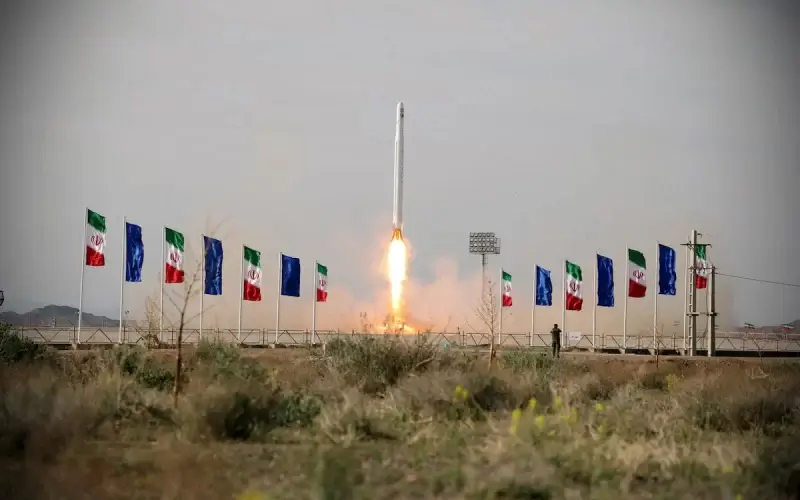Iran plans to send a new satellite into space by the end of the year, an Islamic Revolution Guard Corps official announced on Sunday in Tehran.
“The IRGC will put new indigenous satellites with the ‘Ghaem’ satellite carrier into orbit in the current year,” said Aerospace Force commander Amir Ali Hajizadeh at the Malek Ashtar Festival in the Iranian capital.
“They say that aerospace and drone and missile power are more important issues than nuclear power; and they also know that the same is the case in the defense sector,” Hajizadeh said.
The senior commander used the platform to compare Israel to a disease and to praise Iran for its inventions and its drone and missile capabilities.
“Surface-to-air defense missiles based on drones are an Iranian invention, and we have many such cases; and I must emphasize that both in the accuracy of missiles, in the field of defense, and in the field of radar and drones, the success is due to the strict implementation of the Supreme Leader’s measures,” Hajizadeh said.
According to The Jerusalem Post analyst Seth Frantzman, “That [Hajizadeh] made the remarks public shows Iran’s confidence, but in doing so he also potentially sets the IRGC up for failure if they can’t get the satellites into orbit or if accidents occur.”
According to Reuters, Hajizadeh was behind the downing of a U.S. military drone in the Gulf in June 2019. He also reportedly was responsible for a missile attack on U.S. service members in Iraq and the downing of a Ukrainian Airlines flight near Tehran, both in January 2020.
Two months later, in April 2020, Iran launched its first military reconnaissance satellite, Noor. This March, the Islamic regime put its second Noor into orbit, according to the IRNA news agency.
According to the United States, Iran’s launching of satellites is a violation of the United Nations’ Security Council Resolution 2231, which endorses the JCPOA – the 2015 Iran nuclear deal – and calls on Iran “not to undertake any activity related to ballistic missiles designed to be capable of delivering nuclear weapons, including launches using such ballistic missile technology.”
Permanent representatives of both Israel and the U.S. have complained that Iranian space vehicles incorporate technologies that are “virtually identical to those used in ballistic missiles designed to be capable of carrying nuclear weapons.”
John Krzyzaniak, a research analyst at the International Institute for Strategic Studies, noted that the IRGC’s space efforts probably began in the mid-to-late 2000s under Hassan Tehrani Moghaddam, the father of Iran’s missile program, and independent of the state-run space program.
“It is also outside the oversight of the Supreme Space Council … and, from the outset, served largely as a cover to develop long-range missile technology,” ,” Krzyzaniak stated. “The IRGC has focused on developing solid-fuel rockets, which could be more easily converted to become missiles compared to liquid-fuel rockets, which are what the state-run space program initially relied upon.”
Whether the IRGC program constitutes a threat remains a question.
Krzyzaniak wrote in June that “the Noor-2 has an imaging mission, meaning it has cameras onboard to capture images and send them back to earth.” The other IRGC satellite, the Russian-built Sina-1 launched in 2005, was also reported to be an imaging and communications satellite.
“All of Iran’s other satellites have gradually fallen out of orbit. To maintain their position in space, all satellites need some kind of onboard propulsion system, so when the system runs out of fuel, its orbit will decay, and the satellite will reach the end of its service life,” Krzyzaniak wrote. “For satellites in low-earth orbit, this means gradually losing altitude and burning up in the Earth’s atmosphere. The Omid, Rasad, Navid, Fajr-5, and Noor-1 have all met that fate.”










